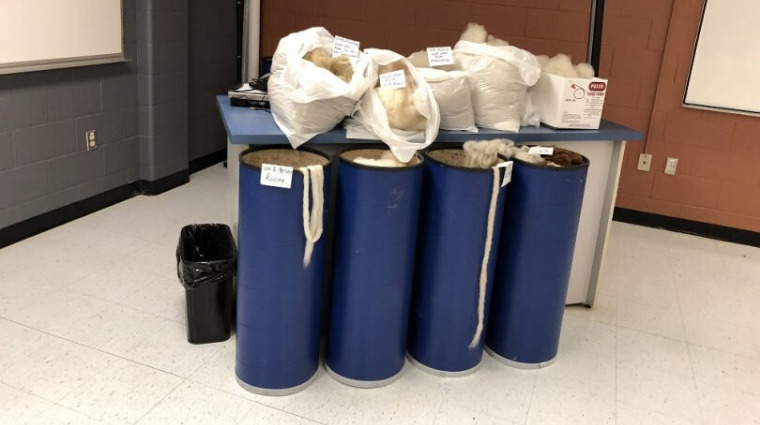
Saskatchewan Polytechnic’s Innovative Manufacturing Centre is turning flax into more than just food
In the spring and early summer, fields of blooming flax can look like lakes of gorgeous blue flowers. Flax is a staple in Saskatchewan agriculture, and the seed is found in delicious breads, granolas and smoothies. While it’s a wonderful food, the fibre it leaves behind in fields is not so wonderful. “Flax has a very durable fibre that can be cultivated but takes a long, long time to decompose,” says Jamie Hilts, dean, School of Mining, Energy and Manufacturing at Saskatchewan Polytechnic. “Often, farmers rely on burning the fibre in their fields to get rid of it. They pay for a fire service, the smoke is not good for the environment, and it smells bad for surrounding communities. However, there is a better way to deal with flax fibre.”
A better way, indeed. Sask Polytech’s Office of Applied Research and Innovation, and the Innovative Manufacturing Centre at the School of Mining, Energy and Manufacturing dug into the problem and found a solution that doesn’t involve burning a thing. Working with businesses, researchers have found a way to blend flax fibre with wool—from sheep, llama and alpaca—and can now produce yarn in a multitude of colours ready to become sweaters, blankets and more. “The process is quite effective,” says Hilts. “Instead of burning the fibre, farmers can have a contractor bail the fibre and have it picked up for use in ways that are far better for the environment while saving themselves the time and money needed to burn.”
Flax fibre can not only be blended into textiles—yarn is just one of its textile options—it can also be integrated with plastics for a variety of applications. “We have been able to bring flax fibre and plastic together into products such as decorative rock materials, siding, decking, flooring and composite materials for things like park benches,” says Hilts. “Flax fibre is a very dynamic material that can have many, many commercial uses.”
Flax fibre is just one of many materials Sask Polytech is working with. The school is also well underway with research projects looking at recycling fibre optic cables, grain storage bags and hemp fibre. As well, Sask Polytech is now home to the only Certified Testing Centre for biomaterials in Canada. “We’re conducting research for applications that may be commercialized within the next 12-24 months,” says Hilts.
Sask Polytech’s integrated approach to applied research is focused on utilizing resources in innovative ways, with an eye on both the environment and entrepreneurial opportunity. Saskatchewan ventures with an idea to explore or a problem to solve can find an ally at Sask Polytech. If the flax project is any indication, the sky’s the limit when it comes to innovation. “Our Office of Applied Research and Innovation is always open to working with businesses to solve problems of all kinds,” says Hilts. “The first step is reaching out.”
For more information on applied research at Sask Polytech, visit saskpolytech.ca/research.
This article was originally published in Industry West magazine. Industry West Magazine is the flagship publication at IW Media Group. Published quarterly and freely distributed, the business magazine is filled with informative, objective and timely editorial and advertising content for Saskatchewan’s business community.
Published February 2020.

